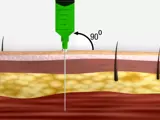Vital signs are always obtained during a routine physical examination, and are also used for assessing symptoms or as part of a follow-up assessment for patients undergoing treatment. This module provides a thorough introduction to the process of obtaining adult vital signs, covering body temperatures, pulse rates, respiratory rates, and blood pressures. Including both Learn and Test modes, the online simulator offers three different scenarios that test your ability to prepare for and assess adult vital signs; each covers temperature, heart rate, respiratory rate, and blood pressure for a variety of clinical presentations. Practice the steps of the procedure as often as you want until you are confident. This module is based on the entry-level competencies for which the Commission on Accreditation of Allied Health Education Programs (CAAHEP) and Accrediting Bureau of Health Education Schools (ABHES) test the Medical Assistant.
You’ll learn
- relevant medical terminology
- the normal values for adult vital signs, including average body temperatures (oral aural and axillary), pulse rates (apical and radial), respiratory rates, and blood pressures
- to visualize the relevant anatomy - pulse and temperature sites, and the main vessels - using our anatomy illustrations and 3D model
- how to prepare for taking an adult's vital signs
- to practice and perfect your skills in obtaining accurate temperatures and pulse rates, volume, and rhythm
- how to take blood pressure and respiration rate accurately
- the requirements for accurate recording of patient data obtained
- much more (see Content Details for more specific information)















